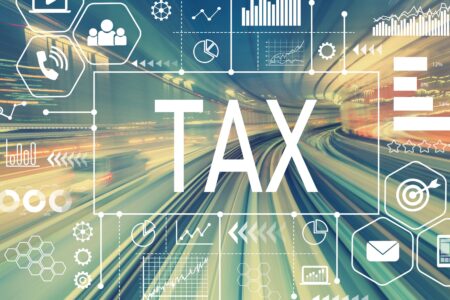IN THIS SUMMARY YOU WILL FIND DETAILS OF:
The highlights from the Statement
Personal Tax
Business Taxes
Economic Overview
Highlights from the Statement

- The main rate of class 1 employee national insurance contributions (NICs) will be reduced from 12% to 10% with effect from 6 January 2024.
- The main rate of class 4 self-employed NICs will be cut from 9% to 8% from 6 April 2024 and class 2 will no longer be required.
- The main income tax allowances and thresholds, the main NICs thresholds plus the inheritance tax (IHT) nil rate bands will stay at their current levels for 2024/25.
- Full expensing of investments made by companies in qualifying plant and machinery will be made permanent and will therefore continue after April 2026.
- The new and old state pension as well as pension credit will rise by the full triple lock increase of 8.5% for 2024/25. Universal credit and most other benefits will increase by 6.7%.
- Investors will be allowed to make multiple subscriptions to ISAs of the same type each year from April 2024, when partial transfers of ISAs between providers will also be permitted.
- The national living wage will increase to £11.44 an hour
- All alcohol duties have been frozen until August 2024.
- The government is seeking to persuade people with health conditions to find work. There is extra funding, as well as new sanctions for those who are found to be able to work but refuse to look for employment
Introduction
Jeremy Hunt’s second 2023 Autumn Statement was set against a much less financially turbulent background than his first. However, with a likely election in the next 12 months, there had been calls for tax cuts from within the Conservative party.
The outcome was an Autumn Statement that had been initially trailed as focusing on longer-term issues, but which prioritised short-term tax cuts over maintaining expenditure in later years. On the long-term front, the Chancellor confirmed as expected that ‘full expensing’ of corporate investment in plant and machinery would be made permanent at a cost of £10.7 billion a year by 2027/28.
The most headline-grabbing moves were cuts to national insurance. Some of the rumours, such as IHT reform, did not come to fruition, but there is still a chance – the Spring Budget is now less than four months away.
Download our updated Tax Facts 2023/4 which includes the revisions to National Insurance rates.

Personal Tax
- Income Tax
- Dividend Tax
- Income Tax for Trusts and Estates
- National Insurance Contributions (NICS)
- Pay as you earn (PAYE) – self-assessment
- Off-payroll working (IR35)
- Company cars and vans
- Capital Gains Tax
- Inheritance Tax
- Stamp Duty Land Tax
- Enveloped Dwellings (ATED)
- State Pensions and Security Benefits
- Pensions
- Individual savings accounts (ISAs)
- Venture capital schemes
Personal Tax
Income tax
The personal allowance will remain at £12,570 for 2024/25 and the higher rate threshold will stay at £50,270, both levels that first took effect in 2021/22. The blind person’s allowance will be increased to £3,070 for 2024/25.
The 45% additional rate threshold will stay at £125,140. In Scotland, the intermediate, higher and top (additional) rate thresholds for non-savings, non-dividend income will be announced in the Scottish Budget, to be published on 19 December.
Dividend tax
The dividend allowance will be halved to £500 for 2024/25 as already announced.
Income tax for trusts and estates
The standard rate band for trusts will no longer apply in 2024/25, as previously announced and legislated. Instead, trusts with income of £500 or less will have no tax to pay. Where a settlor has created more than one trust, the threshold amount will be £500 divided by the total number of existing trusts, subject to a £100 minimum. If the threshold is exceeded, trust tax rates apply to all income.
There will be no tax for estates where the income does not exceed £500. In such circumstances, estate income paid to beneficiaries will also be free of tax.
National insurance contributions (NICs)
The class 1 primary threshold and class 4 lower profits limit will remain aligned with the personal allowance (£12,570). The upper earnings limit and class 4 upper profits limit will remain aligned with the higher rate threshold at £50,270 through to April 2028. The lower earnings limit (£6,396) and the small profits threshold (£6,725) will remain unchanged in 2024/25.
From 6 January 2024 the class 1 primary (employee) contributions rate on earnings between £12,570 and £50,270 will be cut by 2% to 10%. The 2% rate on earnings above £50,270 will remain unchanged.
From 6 April 2024, class 2 contributions will no longer be required from the self-employed. However, those with profits below £6,725 (unchanged) who wish to retain access to contributory benefits (e.g. state pension) will continue to have the option to make voluntary contributions.
From the same date, the class 4 contribution rate on earnings between £12,570 and £50,270 will be reduced by 1% to 8%. The 2% rate on earnings above the upper limit will be unchanged.
The voluntary class 3 rate will be unchanged at £17.45 a week for 2024/25.
National Insurance Contributions rates for 2024/25 are as follows:
| Class 1 | Employee – primary | Employer – secondary |
| NICs rate | 10%* | 13.8% |
| No NICs for employees generally on the first | £242 pw | £175 pw |
| No NICs for younger employees† on the first | £242 pw | £967 pw |
| NICs rate charged up to | £967 pw | No limit |
| 2% NICs on earnings over | £967 pw | N/A |
* Applies from 6 January 2024. 12% between 6 April 2023 and 5 January 2024.
†No employer NICs on the first £967 pw for employees generally under 21 years, apprentices under 25 years and veterans in the first 12 months of civilian employment. No employer NICs on the first £481 pw for employees at freeports in Great Britain in the first three years of employment.
| Employment allowance | |
| Per business | £5,000 |
Not available if the sole employee is a director or if the employer’s NICs for 2023/24 are £100,000 or more.
| Limits and thresholds | Weekly | Monthly | Annual |
| Lower earnings limit | £123 | £533 | £6,396 |
| Primary threshold | £242 | £1,048 | £12,570 |
| Secondary threshold | £175 | £758 | £9,100 |
| Upper earnings limit (and upper secondary thresholds for younger/veteran employees and apprentices under 25) | £967 | £4,189 | £50,270 |
Class 1A Employers
| On car and fuel benefits and most other taxable benefits provided to employees and directors | 13.8% pa |
Class 2 Self-employed
| Flat rate (voluntary) | £3.45 pw / £179.40 pa |
| Small profits threshold | £6,725 pa |
| Lower profits limit | £12,570 pa |
Class 4 Self-employed
| On annual profits of | £12,570 to £50,270 | 8% |
| Over £50,270 | 2% |
| Class 3 flat rate | £17.45pw | £907.40 pa |
Pay as you earn (PAYE) – self-assessment
Individuals with income taxed only through PAYE will no longer be required to file a self-assessment return from 2024/25.
Off-payroll working (IR35)
HMRC will be able to reduce the PAYE liability of a deemed employer to account for taxes paid by a worker and their intermediary on payments received where an error has been made in applying the off-payroll working rules.
Company cars and vans
The benefit-in-kind appropriate percentages for all cars will remain unchanged for 2024/25. Car and van fuel benefit charges and the van benefit charge will also remain at 2023/24 levels.
Capital gains tax
The annual exempt amount for individuals and personal representatives will be halved to £3,000 in 2024/25, as previously announced. The annual exempt amount for most trusts will be cut to £1,500 (minimum £300).
Inheritance tax
The nil rate band for 2024/25 will remain at £325,000, which was the level first set in 2009/10. The residence nil rate band (RNRB) will likewise stay at £175,000, and the RNRB taper will continue to apply where the value of the deceased’s estate is greater than £2 million.
Stamp duty land tax (SDLT)
The SDLT bands for residential property in England and Northern Ireland will remain unchanged until 1 April 2025. From that date, the 0% band threshold will be halved to £125,000 and a 2% rate applied between £125,000 and £250,000.
Enveloped dwellings (ATED)
The annual chargeable amounts for the ATED will be increased by 6.7% for 2024/25.
State pensions and social security benefits
The basic state pension, new state pension and pension credit standard minimum guarantee will be increased by 8.5% in April 2024, in line with May to July earnings growth under the triple lock provisions. All other UK-wide benefits will increase by 6.7% from April 2024.
Local Housing Allowance rates in Great Britain will be raised to the 30th percentile of local market rents in April 2024. At present, they are based on April 2020 rental levels.
Pensions
Nine documents were published relating to the pensions framework. These included:
- calls for evidence on a lifetime provider model to allow individuals to move towards having one pension pot for life, and
- the creation of a ‘public consolidator’ for defined benefit schemes, to be run by the Pension Protection Fund.
Additional tax-related papers were issued about amending the relief at source arrangements, as previously proposed, and clarifying the impact of the abolition of the lifetime allowance from 6 April 2024.
Individual savings accounts (ISAs)
Various reforms were announced for ISAs. From April 2024:
- Investors will be allowed to make multiple subscriptions each year to ISAs of the same type.
- Partial transfers of ISA funds in-year between providers will be allowed.
- There will no longer be a requirement to reapply annually for an existing dormant ISA.
- The Innovative ISA will be expanded to allow investment in Long-Term Asset Funds and open-ended property funds with extended notice periods.
- The minimum account-opening age for adult ISAs will be harmonised at 18, removing the current cash-only adult ISA for 16 to 17-year-olds.
- Contribution limits will be unchanged.
The government will engage with providers about permitting certain fractional shares contracts as eligible ISA investments.
Venture capital schemes
The sunset clauses for the enterprise investment scheme (EIS) and venture capital trusts (VCTs) will be extended from 6 April 2025 to 6 April 2035.

Business Taxes
- Capital allowances: full expensing
- Research and development (R&D) tax reliefs
- Creative industries
- Business rates
- Investment zones
- Freeport tax reliefs
- Making tax digital (MTD)
- Cash basis
- Training costs for self-employed people
- VAT: energy-saving materials
- Construction Industry Scheme (CIS)
- Tax avoidance and fraud
- Top-up tax
- Planning
Capital allowances: full expensing
Full expensing, which was originally due to expire on 31 March 2026, is to be made permanent. This allows companies incurring qualifying expenditure on the provision of new plant and machinery to claim a 100% first-year allowance for main rate expenditure and a 50% allowance for special rate expenditure.
Expenditure on plant and machinery for leasing remains excluded, but the government will consult on a potential removal of this exclusion. The government will also consult on wider changes to simplify capital allowances legislation.
Research and development (R&D) tax reliefs
The R&D expenditure credit and the small or medium enterprise (SME) schemes will be merged for accounting periods beginning after 31 March 2024. The rate under the merged scheme will be 20%, and the notional tax rate applied to loss-makers will be the corporation tax small profit rate of 19%.
The enhanced support for R&D-intensive SMEs will continue. The intensity threshold for the level of R&D expenditure required to qualify for enhanced support will be reduced from 40% to 30% from 1 April 2024. For loss-making companies that meet the definition of R&D intensive, the payable tax credit rate will be 14.5%.
For claims made after 31 March 2024, the use of nominations for R&D tax credit payments will be removed, meaning that payments must go directly to the claimant company.
There will be a one-year grace period where a company’s R&D intensity falls below 30%. This will help companies in situations where expenditure fluctuates year on year.
Creative industries
The government intends to widen the Audio-Visual Expenditure Credit for visual effects expenditure and will work with the industry on how best to design this with the intention of implementing changes from April 2025.
Business rates
The small business multiplier will be frozen for the fourth year in a row, and the 75% relief for retail, hospitality and leisure properties will be extended for 2024/25. The standard multiplier will be uprated by 6.7%.
Investment zones
The investment zones programme will be extended from five to ten years. New investment zones have been announced in Greater Manchester, the West Midlands and the East Midlands, with specific focuses. There will also be two investment zones in Wales: in the Cardiff and Newport area and the Wrexham and Flintshire region.
Freeport tax reliefs
The sunset date for the freeport tax reliefs will be extended to 30 September 2031 for freeports in England, conditional on the agreement of delivery plans. For freeports in Scotland and Wales, the reliefs will be extended from five to ten years, subject to agreement with the devolved administrations.
Making tax digital (MTD)
The £30,000 threshold for MTD for income tax self-assessment will remain. This means people with gross income from self-employment and property below this threshold will not have to file tax returns using MTD. Foster carers and people unable to get a national insurance number will also be exempt.
The government will also simplify the requirements for all taxpayers providing quarterly updates and for taxpayers with more complex affairs, such as landlords with jointly-owned property. An end-of-period statement will no longer have to be provided.
Cash basis
The income tax cash basis will be expanded for self-employed individuals and partnerships from 6 April 2024. The cash basis will become the default method for small businesses, and the current turnover, interest and loss relief restrictions will be removed.
Training costs for self-employed people
HMRC will rewrite guidance about the tax deductibility of training costs for sole traders and the self-employed to provide more clarity to businesses on what costs are deductible.
VAT: energy-saving materials
VAT relief on the installation of energy-saving materials will be extended to additional technologies, such as water-source heat pumps. Buildings used solely for a relevant charitable purpose will be brought within scope. The changes will take effect from February 2024.
Construction Industry Scheme (CIS)
Compliance with VAT obligations will be added to the CIS gross payment status test. HMRC will also gain extended powers to remove gross payment status immediately in cases of serious fraud. The majority of payments by landlords to tenants will be removed from the scope of the CIS. The changes will take effect from 6 April 2024.
Tax avoidance and fraud
It will become a criminal offence for promoters of tax avoidance to continue to promote schemes after receiving a Stop Notice requiring them to stop promoting schemes described in that notice.
HMRC will be able to bring disqualification action against directors of companies involved in promoting tax avoidance. The changes will take effect from the date of Royal Assent to Autumn Finance Bill 2023, together with the doubling of the maximum sentences for tax fraud to 14 years announced in the Spring Budget 2023.
Top-up tax
There will be amendments to the multinational and domestic top-up taxes to reflect recent internationally agreed guidance and make clarifications following consultations. The Undertaxed Profits Rule will be added to the multinational top-up tax for accounting periods beginning on or after 31 December 2024.
Planning
A new planning service will be introduced to speed up planning decisions. Applicants will have to pay the full cost of the process, which will be refunded if the planning authority does not meet the stated timescale. Some planning constraints will be removed to accelerate the expansion of electric vehicle charging infrastructure.
.

Economic Overview
The economic backdrop to the 2023 Autumn Statement was not as bad as might have been expected from a reading of the March 2023 projections by the Office for Budget Responsibility (OBR).
In the spring, the OBR’s first Economic and Fiscal Outlook of 2023 envisaged that the government would borrow £131.6 billion. Seven months into the financial year, the OBR’s projection has dropped by about £16 billion because of stronger-than-expected tax revenue, giving the Chancellor some extra wiggle room.
This tax windfall owes much to the impact of both price inflation and earnings growth being higher than projected in March. Back then the OBR had suggested that CPI annual inflation would fall to around 3% in the final quarter of 2023 against its latest projection of about 4.5%.
The higher-for-longer combination of inflation, earnings growth and interest rates has brought some significant changes to the OBR’s projections for the economy:
- The OBR forecast says inflation will not now fall to 2% until the second quarter of 2025, a year later than previously forecast.
- The outlook for economic growth in the short term has improved, with +0.6% expected for 2023 against a 0.2% contraction in the March forecast. However, the OBR’s growth projections for 2024 and 2025 are both 1.1% lower than their March figures.
- Ten-year government bond yields at 4.5% are 1.2% higher than the OBR’s March projection. The OBR has now added this figure to its previous projections of government borrowing costs for the entire five-year forecast period. The base rate is now expected to average about 4% in 2027/28, just over 1% above the March projection.
- Government borrowing is projected to be £84.6 billion in 2024/25 and eventually to drop to just below £50 billion in 2027/28. But total government debt will then amount to £2,947 billion (93.2% of GDP) costing £98.4 billion a year to service.
The OBR says the Chancellor will meet his fiscal goal in 2028/29 by £13 billion (0.4% of GDP), double the amount it projected in March. That margin could prove a challenge to maintain for the next government.
Summary
The tax and other changes announced in the Chancellors 2023 Autumn Statement and March’s Spring Budget will affect tax and financial planning for both businesses and individuals. So too will be the thresholds and rates left untouched in the weak economy.
The capital gains tax and dividend tax changes announced in recent Budgets make year-end tax planning even more important than usual for private investors. The continuing freeze of the various income tax thresholds means that more and more people are being pulled into higher rate tax, perhaps for the first time.
As we usually say after a Chancellor’s announcement, the devil is in the details. As the Treasury begins to release the papers behind the Chancellor’s headlines, we will be closely monitoring what these mean for our clients. We’ll be sharing our conclusions and advice here on our website and in our conversations with clients.
Can we help?
In the meantime, if you wish to discuss how the 2023 Autumn Statement will impact you, please do talk with your usual Shipleys’ contact or one of our offices.
Note
This summary is based on the Chancellor’s Statement on 22 November 2023 and supplemented by information from official publications. It reflects our understanding of proposed changes to tax law and practice at the date of publication, but is not a complete and definitive guide. The Government’s proposals may be amended.
Specific advice should therefore be obtained before taking action, or refraining from taking action, on the basis of this information.
© 2023 Shipleys LLP





















